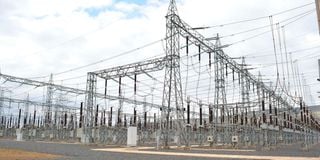The World Bank pushes to end Ketraco’s dominance

A Kenya Electricity Transmission Company Suswa Substation in Narok County.
The World Bank is pushing Kenya to accelerate plans to allow private companies to build electricity transmission lines in a bid to unlock private capital to enhance electricity connectivity in the country.
The concept is similar to tolling of roads where power transmission projects will be built through a public-private partnership (PPP) model in which non-State firms will bill distribution companies for electricity transmitted via their grids.
“Continued external support is needed to both recover financial stability and complete the electrification programme. Given periodic governance challenges, Kenya might consider further private participation in core utilities, including in transmission,” says the Bretton Woods Institution.
The fully state-owned Kenya Electricity Transmission Company (Ketraco) is currently the sole firm charged with building, maintaining, and operating high-voltage transmission infrastructure within the country.
However, Kenya Power still owns and operates the transmission lines it set up before establishment of Ketraco in 2008, with the State planning to transfer these transmission assets to the latter.
The World Bank reckons Kenya has a financing gap of at least 90 percent amounting to $5.9 billion (Sh724 billion) to fund new power transmission projects between 2013 and 2030, an investment the government cannot meet alone, said the lender.
It said Kenya needs to enact laws to allow for private investment in power transmission to hasten Kenya’s quest for universal electricity access in the next seven years.
Ketraco primarily relies on State funding and wheeling revenue – which amounts to about Sh2.6 billion each year – to fund its operations.
Wheeling tariffs are set by the Energy and Petroleum Regulatory Authority (Epra) every year and bills Kenya Power for electricity transmitted via Ketraco’s network.
Ketraco also bills regional utilities that evacuate electricity through its network.
“IFC and the ongoing Infrastructure PPP Project (P121019) will continue to support the preparation of future energy PPPs including two transmission lines and geothermal capacity,” said World Bank.
The World Bank reckons that private participation in power transmission will cut Kenya Power’s system losses where some 23 percent of electricity bought from generators is lost along the way due to old infrastructure and power theft.
“Public finance will likely continue to play a role in funding the transmission sector, but its funding will not meet the energy targets and private finance can help bridge the gap,” said the lender in a previous report.





